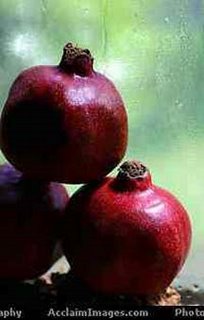
Harvested some paltry Japanese eggplant, peppers, the last of the tomatoes, and – the prize – a lovely orange squash that I’ll use to make vegetable lasagna later this week. I also took some limes even though they’re still pretty small, because they smell so lovely.
Pomegranates are ready too. We didn’t get any last year – they were small and diseased. The tree was severely pruned last winter, to clear out the dead branches and give the others some air and sunlight. The soil was amended and fertilizer was also sown. We’re ready to reap the benefits. Birds have, as expected, found ways to open and harvest some of the fruits. When the birds and bugs are done, the hollowed out fruits are often beautiful sculptures, painted on the outside with a natural patina of fading red, and creamy beige inside.
But the best part is that S.E. stopped by and, in return for a few pomegranates, told us the secret to getting out the juicy seeds. She said, fill a clean water bucket or deep bowl with water. Put the fruits under water and cut open and gently spread the fruit in half. Let the fruit sit in the water and the white pulp floats to the top, leaving the berries in the bottom. Once gravity has done the job, you can scoop out the pulp, put the rest through a strainer to wash off the last of the pulp, and the berries are ready to put in salads or, better yet, juice them to make a fresh Tequila sunrise.

Vegetable gardening is not just rewarding because you eat what you grow. There are other rewards. Sharing the garden chores in a public garden provides countless opportunities to learn from other volunteers and visitors. We can commiserate over our failures and share experiences and strategies to overcome them next season.
Companion planting is a term often used to refer to the way certain plants establish a mutually beneficial relationship. For example, the basil amid the tomato plants offered sensory rewards, and may have benefited both vegetables.
But companion planting can also refer to sharing the work of managing a garden with working companions. In addition to learning how to cultivate an edible garden, I’ve learned that working companions can transform the task. As with my basil and tomatoes, it’s as if the physical therapy of gardening works better when combined with mental therapy of talking with gardening companions.
No comments:
Post a Comment